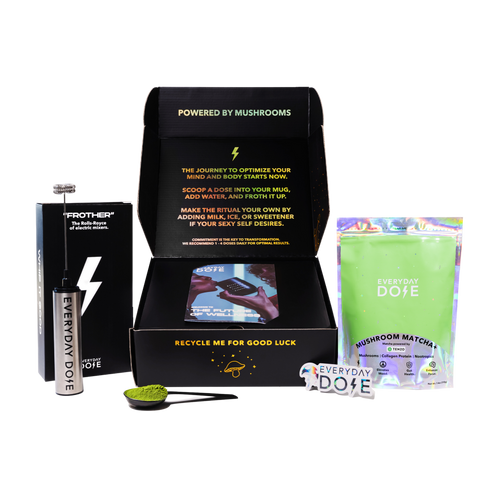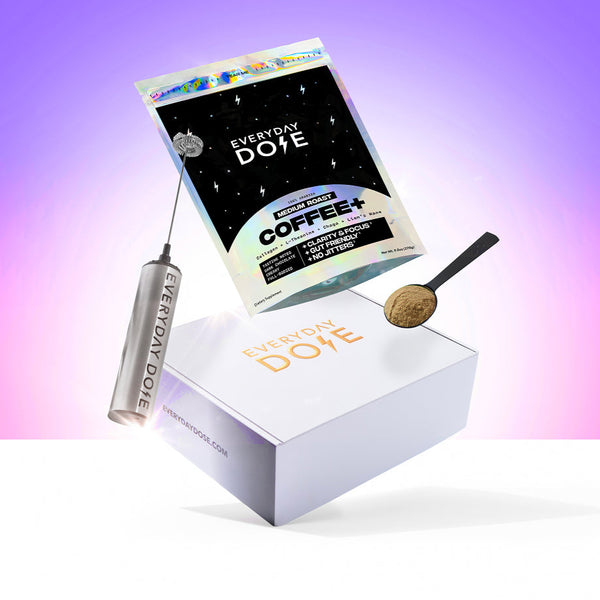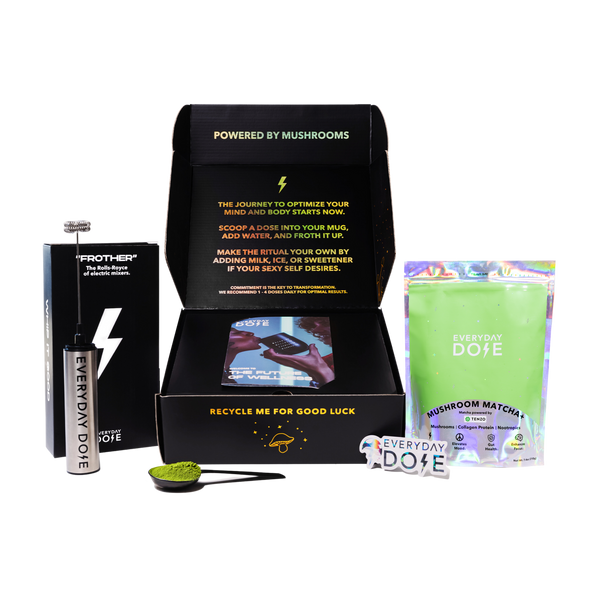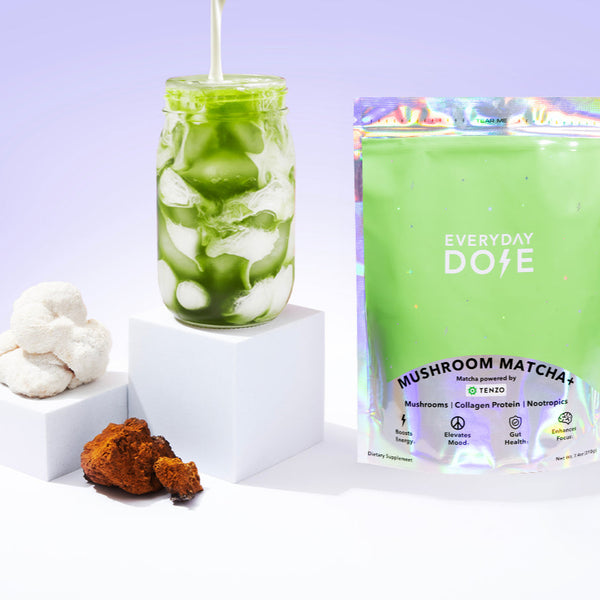The Lion's Mane Mushroom Life Cycle
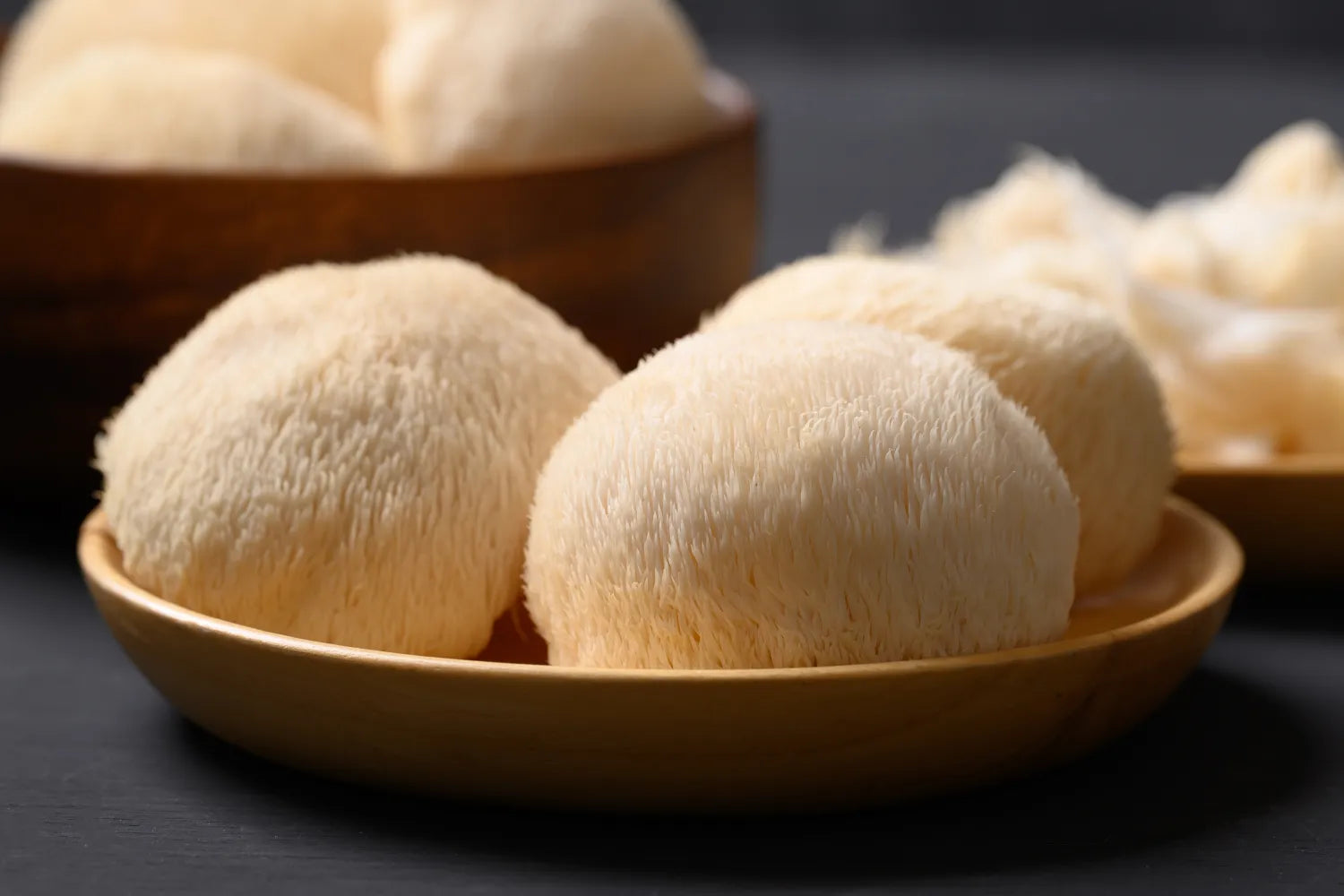
By the time many of us see lion’s mane mushroom, it’s already been extracted and packaged to make getting the lion’s mane benefits as easy as possible. In fact, you might not even know what this mushroom really looks like.
However, this mushroom is actually quite fascinating. From its life cycle and its growing conditions to its appearance and benefits, it’s safe to say lion’s mane is really quite magical (but not in a psychedelic way). Read on to learn more about the lion’s mane life cycle and what to know about the cultivation process.
5 Stages of the Lion’s Mane Mushroom Life Cycle
Lion’s mane doesn’t just pop out of the ground overnight like a magic trick. Generally, its life cycle unfolds over five major phases: incubation, primordia formation (pinning), fruiting body development, maturation, and aging. The full cycle can wrap up in about six weeks under optimal conditions.
Throughout its journey, lion’s mane transforms from invisible spores floating in the air to massive, snowball-shaped fruiting bodies packed with compounds like hericenones and erinacines. Let’s get into the nitty-gritty of each phase and what they look like.
1. Incubation
Before the lion shows its mane, it has to establish itself underground — or, more accurately, in its substrate, which is naturally hardwood trees. Lion’s mane starts life as a spore, and when conditions are right, that spore germinates into tiny, thread-like structures called hyphae. These hyphae then fuse and start weaving together a massive underground web known as mycelium.
This is when things really get started. The mycelium is responsible for absorbing nutrients, colonizing the growth medium (usually hardwood sawdust or enriched logs), and setting the stage for fruiting.
In ideal settings, lion’s mane mycelium can completely take over a substrate block in about three weeks. It’s like the mushroom’s version of laying down roots.
2. Pinning
Once the mycelium’s done with its subterranean sprawl, it’s ready to show off. This is when the mushroom enters primordia formation, also called "pinning." Environmental cues like increased humidity (90%+), cooler temperatures, and exposure to indirect light tell the mycelium that it’s time to start the fruiting body process.
Tiny white nodules, about the size of a pencil eraser, start popping up — these are the primordia. This stage is ultra-sensitive. Any sudden changes (like dry air or direct harsh light) can ruin the mushroom’s growth.
3. Fruiting Body Development
Once those baby bumps break ground (or bark), lion’s mane mushrooms go into overdrive. Over the next five to 10 days, those little primordia transform into fully fledged fruiting bodies. The growth is pretty jaw-dropping — some cultivators swear they can see size changes in mere hours!
The mushroom’s signature shaggy look starts taking form around this stage. You’ll start to see long, flowing spines that eventually cascade down like a botanical waterfall. These spines are beautiful, but they’re also responsible for developing spores and other mushroom compounds. The mushroom doubles, sometimes triples in size during this phase.
4. Maturation and Harvesting
Lion’s mane doesn’t keep you waiting when it’s finally ready to grow up. This mushroom’s maturity is usually obvious. The spines elongate to about one to two centimeters, growth slows, and the entire mushroom looks fully fluffed and luxurious.
Timing matters a lot here — if you harvest too early, you lose size and potency. Too late, and the mushroom starts drying out and dropping spores.
Once the spines stop growing and the surface starts feeling a tad less bouncy, it’s prime time to harvest. Waiting even 24 hours too long can lead to over-mature lion’s mane, which tastes more bitter and loses that coveted juicy texture.
5. Aging and Spore Release
After the glamour of maturity, lion’s mane starts to age. The mushroom will begin to look more yellow, its texture becomes tougher, and it gears up to launch its next generation into the world. In nature, lion’s mane releases millions of spores into the air during the heat of the day when humidity is lower.
If you’re growing it at home, letting lion’s mane reach spore release indoors is usually discouraged. This is because it can trigger allergies. It also signals the end of the fruiting body’s prime.
What Makes Lion’s Mane Different?
Biologically, lion’s mane is quite fascinating. For starters, it reproduces sexually through a bifactorial heterothallic mating system, meaning two compatible mycelia must meet and mingle to make the magic happen.
It also produces chlamydospores, thick-walled spores that allow it to survive gnarly conditions for years. Scientists have found chlamydospores that stayed viable for over seven years.
Additionally, lion’s mane doesn’t have the typical parts you might find in other mushrooms. You won’t find a stalk, cap, or gills in the lion’s mane fruiting body.
It also contains hericenones and erinacines, compounds that are now being heavily studied for their ability to support nerve growth factor (NGF) production, potentially aiding cognitive function and nerve repair.
What To Consider When Growing Lion’s Mane
Whether you’re growing lion’s mane yourself or purchasing pre-made supplements, there are a few things you should know about. When it comes to quality, make sure you look at substrate choice and extraction methods.
Substrate Choice
Lion’s mane mushrooms aren’t too picky, but they perform best on hardwood substrates like oak, beech, or supplemented sawdust blocks. They adore lignin and cellulose, the building blocks of wood.
Some commercial growers opt to use a cheaper substrate, like grain. This might save money, but it also affects the overall quality of the mushroom. Think about it — grain and wood are two very different substances and contain very different nutrients. If you want the full benefits of your medicinal mushrooms, look for mushrooms grown on the foods they usually choose in their natural habitats.
Environment
Lion’s mane thrives in cool, moist, and breezy conditions — about 60 to 70°F with 85 to 95% humidity and gentle air movement. Light exposure (12 hours on, 12 hours off) also helps encourage fruiting without stressing the mycelium.
Extraction Methods
When it comes to making supplements, single extraction typically uses alcohol to pull out fat-soluble compounds (like hericenones). Double extraction combines alcohol and hot water to snag both fat-soluble and water-soluble compounds (including erinacines).
We also recommend extracting fruiting bodies, not mycelium. You can technically extract both, but fruiting bodies are richer in medicinal compounds and have less of a chance of bringing unwanted toxins with them.
Mycelia aren’t your average roots. They’re even finer than a human hair, which means they’re nearly impossible to separate from their substrate. So, if you’re taking a supplement made with grain-fed mycelium, it has grain in it. The best way around this issue is to use 100% fruiting bodies.
This is exactly why it’s important to source mushroom supplements from growers who actually care about the quality of their products. For instance, our Mushroom Coffee+ is made using 100% fruiting bodies grown on birch trees, which are extracted using both alcohol and hot water methods.
Why do we care so much? Because we take our mushroom blends ourselves.
Final Thoughts
Lion’s Mane isn’t your typical mushroom, but it still has many of the same life cycle stages as regular mushrooms. Each phase of its life gets you one step closer to those wonderful compounds that provide benefits like mood support, cognitive health, sleep support, and even gut balance.
For so many reasons, this mushroom is way cooler than many people give it credit for. And if you haven’t tried it yet, don’t worry — getting the benefits of lion’s mane is as easy as sipping on one of our delicious mushroom blends.
Sources:
How Mushrooms are Grown | Canadian Food Focus
How to ♼ Mushroom Blocks: FAQ's & Growing Tips | Central Texas Mycology
Start your day
The Right Way


